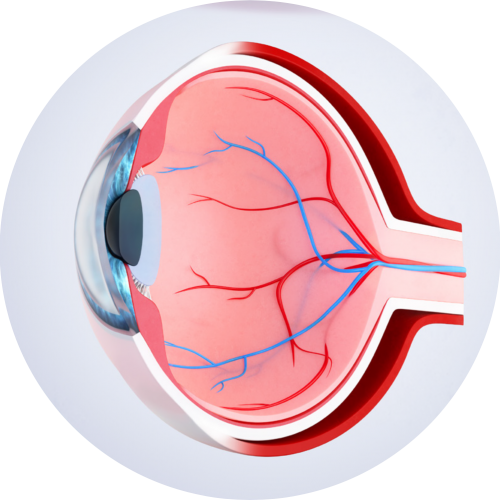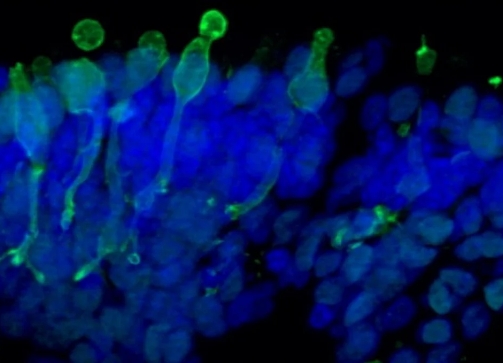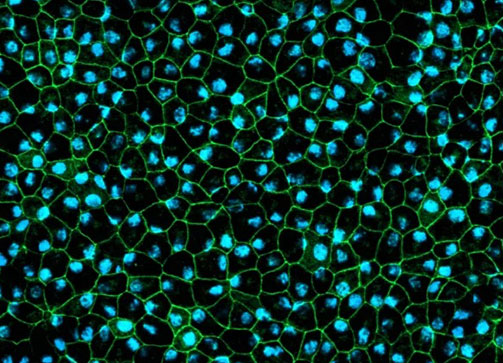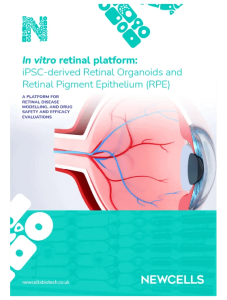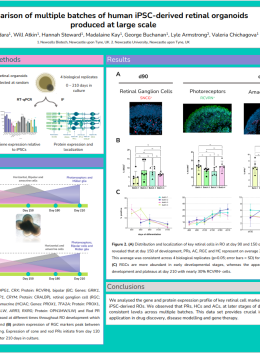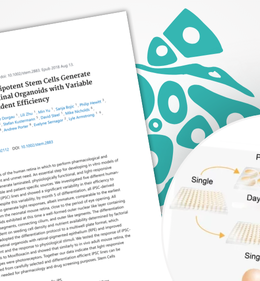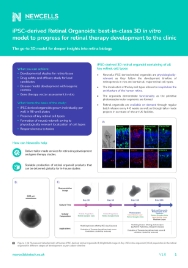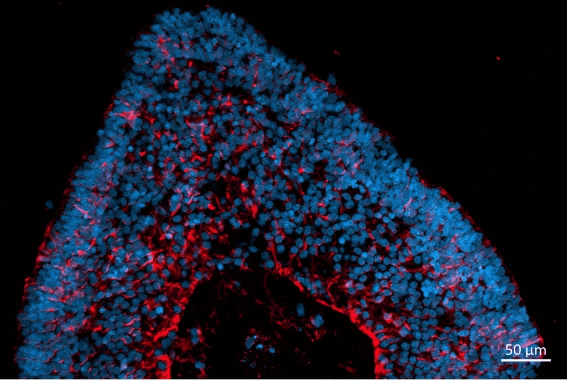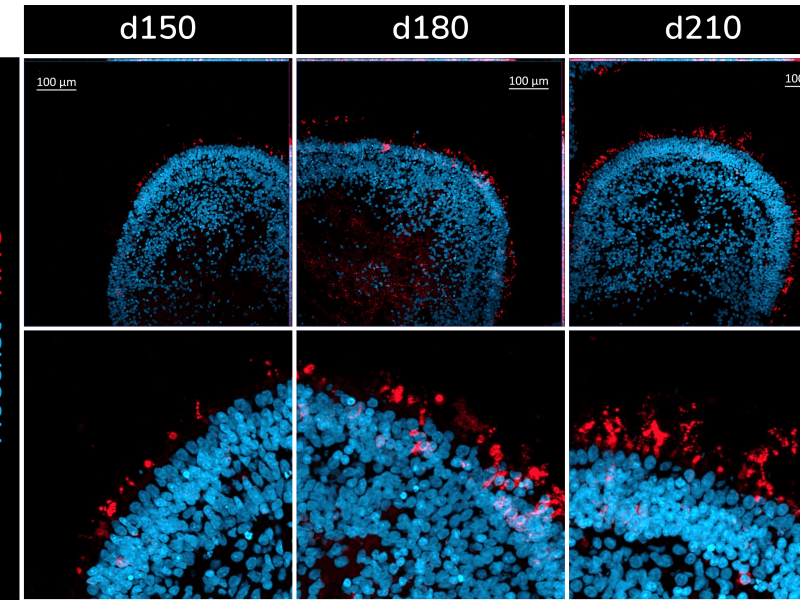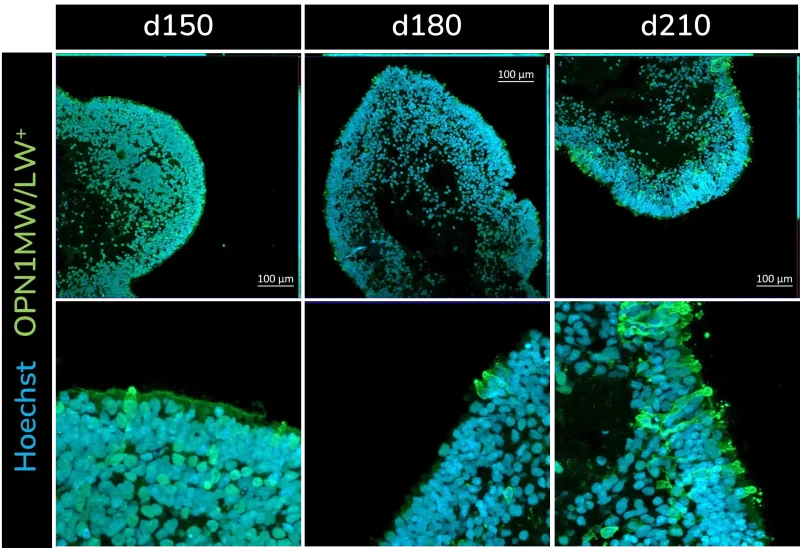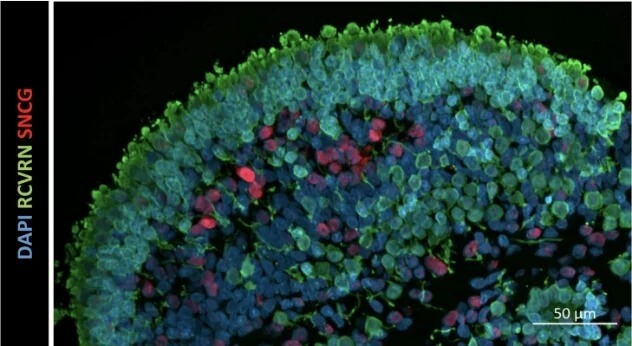Accelerate your retinal research today with our unparalleled models tailored for discovery, innovation, and clinical translation. Contact us now to learn more!
Our retina models have been engineered by experts in iPSCs to mimic human embryonic development and human physiology. The models and assays have been characterised and rigorously validated to generate reliable comparative data predictive of human responses
Retinal Organoids
These light-responsive organoids mimic the intricate structure of the human retina, including laminar cell organisation and functional outer photoreceptor segments that respond to light stimuli. They serve as an invaluable tool for advancing science and clinical applications.
Retinal Pigment Epithelium (RPE)
A functional 2D model of retinal pigment epithelial cells generated from human iPSCs recapitulating phagocytosis of photoreceptor outer segments. The RPE cells are pigmented and displays typical cobblestone morphology.
